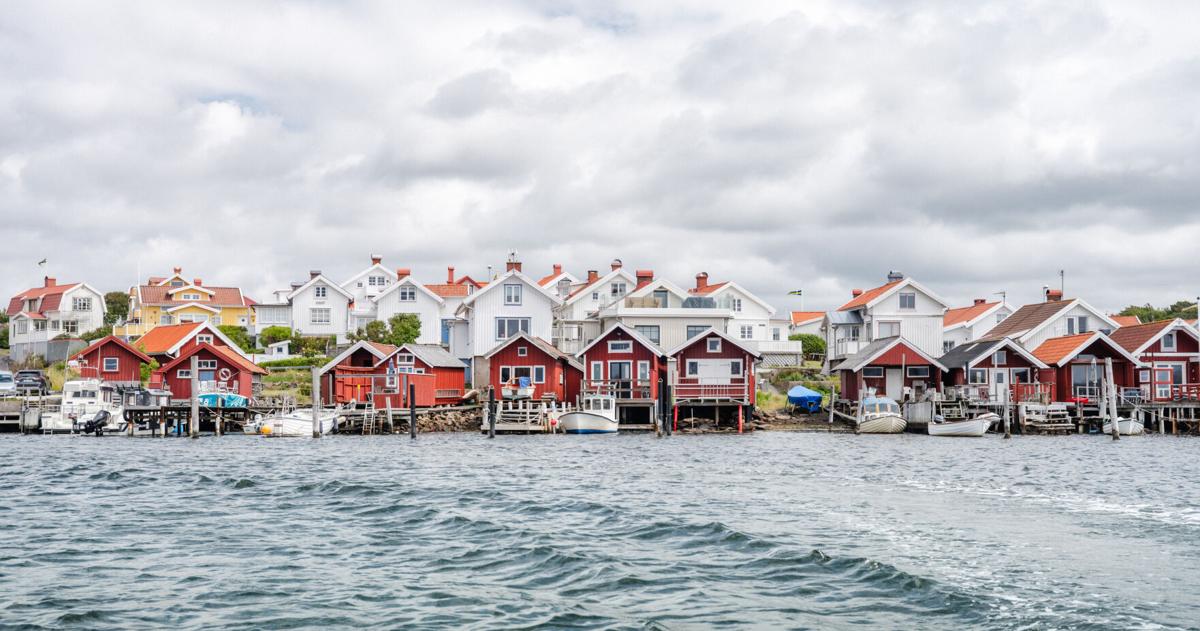Back in Gothenburg, I stop for lunch at the Feskekôrka (Fish Hall, or “fish church”) but save room to sample cheeses, baked goods and the Gelaterian Göteborg’s famed gelato at Stora Saluhallen, a smorgasbord market for foodies. Then I hop a tram to World of Volvo, a stunning new attraction (opened in 2024) that caught my eye as I first drove in from the airport.
From the highway I glimpsed a graceful, giant arc of elegant wood that I thought might be a stadium or perhaps Gothenburg’s version of, say, the Sydney Opera House, only to discover the World of Volvo is part-car museum, part-ode to Scandinavian design and the Volvo ethic, and totally worth a visit, even if, like me, you barely know what four-wheel drive is.
Rocks, boats, sea, sky and clouds in Sweden.
Stephanie Hunt/Provided
This 240,000-square-foot architectural marvel of soaring timber and glass was designed to suggest a circular, embracing tree with expansive spaces that are “open, warm and welcoming,” according to architect Martin Stenberg Ringner of Henning Larsen Architects. Featuring a green, living roof and sustainable materials, the LEED Gold-certified building embodies the Swedish tenet of “allemansträtten,” or the right to roam. You don’t see “No Trespassing” signs in Sweden; everyone has right of public access to explore and enjoy nature, even on private property.
This sense of respect and reverence for the Earth is reflected in World of Volvo’s fluid gallery design, and in Volvo’s EV innovations, including the sporty EX30, a fully electric model geared for camping and transporting kayaks and bikes. Likewise, the company’s environmental commitment extends beyond their product line and this impressive interactive museum-slash-tourist attraction into the city itself.
The World of Volvo is a must-visit.
Stephanie Hunt/Provided
While Gothenburg may be Sweden’s second city, it’s been the world’s No. 1 Most Sustainable City, topping the Global Destination Sustainability Index for several years running (though this year it dropped behind Helsinki, by one mere percentage point). Volvo Cars has led the way, partnering with the city to create a Green City Zone Initiative, featuring emission-free sustainable transportation modes, including robotaxis, as part of Gothenburg’s aim to become a climate-neutral city by 2030.
